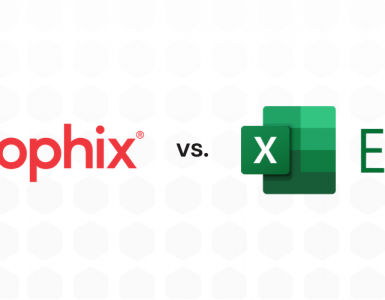Knee-jerk Cost-Cutting Isn’t the Answer to Recession; Smart Cost Management is
Nearly 40 per cent of economists surveyed expect a recession in 2020 and 72 per cent expect one by the end of 2021, says the National Association for Business Economics. In such an environment, tightening the corporate purse strings is a natural reaction, but smart cost management is a better one.
While economists are not always correct in their predictions, there have been several worrisome indicators of an imminent correction. The simple fact we are now in the longest bull market in history is enough to give some pause. Compound that with inverted yield curves, slower growth in China, unrest in Hong Kong, a downturn in trade due to tariff wars, rising US Government debt, and the case for caution is pretty compelling.
But there is an equally compelling truism that no company has ever slashed itself to growth or success.
If we are heading into a downturn or recession, it’s wise to remember that economic downturns are not bad for all companies. In fact, they represent opportunity for some. People may buy fewer cars in a recession, but they will likely spend more on ride sharing. They may dine out less, but will probably spend more on packaged meals.
The same is true of the software business. In a recession, companies often spend less on marketing and advertising, so companies like Google and Facebook could suffer if digital marketing spends decrease. Companies are also less likely to make big investments in technology if they are cash strapped, so they may choose to push a costly ERP replacement to a future date.
But some software firms will benefit from companies that want to save money. For example, expense management software might be a great investment for a company that needs to cut costs.
Likewise, Corporate Performance Management (CPM) software – used by finance departments for budgeting, forecasting, financial reporting and financial analytics – is just the kind of tool companies need to understand where their resources are best spent and where they are not generating justifiable returns. In other words, CPM software enables smart, strategic cost management.
When companies are flush, buying software is often an easy decision. Investing in productivity software such as an ERP system might be scary but that anxiety is offset by the knowledge it will produce long-term benefits. The same is true for CPM software because it makes finance departments more productive and more strategic.
A financial downturn is undeniably a shock to the system. Market segments that were buoyant are suddenly stagnant or contracting. Products that were selling well become bloated inventory. Companies realize they must react to the new market behavior. They need to run more efficiently, but ill-informed decisions on where to spend less or divert resources for a better return only compound the harm.
This is when companies most need CPM software. They need to plan more accurately; they need to see the effect of exiting from a market; they need to understand which products and sales channels are the most profitable.
One case study that demonstrates the benefits of CPM software in hard times came immediately after 9/11. It involves two companies in the same industry, owned by the same holding company. Both were asked by their board to produce plans based on seven scenarios. The scenarios made assumptions about possible downturns in different market segments (such as how much business travel would decline vs. personal travel).
The finance departments of both companies were given the same seven scenarios. The company that was using it legacy spreadsheet-based system to generate reports on those scenarios could only manage to report on two of the scenarios in the two-week period they were given. The company that used a CPM system completed all the scenarios and gave the board the useful strategic insights it needed to react effectively, smartly.
To some it might seem that implementing better planning when times are tough is like closing the stable door after the horse has bolted. That would be true if it took months to implement CPM software. But with today’s generation of CPM – browser-based software with intuitive interfaces – it’s only a matter of days or weeks to be generating valuable insights. Not months or years. That means that if an economic downturn is on the horizon, a company can act quickly to take the right steps to manage new challenges, using CPM software to better plan for if (or when) the economy falters.
Rather than being a driver of across-the-board cost-cutting, which may not be sufficient to withstand a downturn and that will almost certainly make it harder to come out of the downturn ready to grow, a recession can be an opportunity to put in place a CPM system that enables smarter decisions and faster, stronger recovery.






